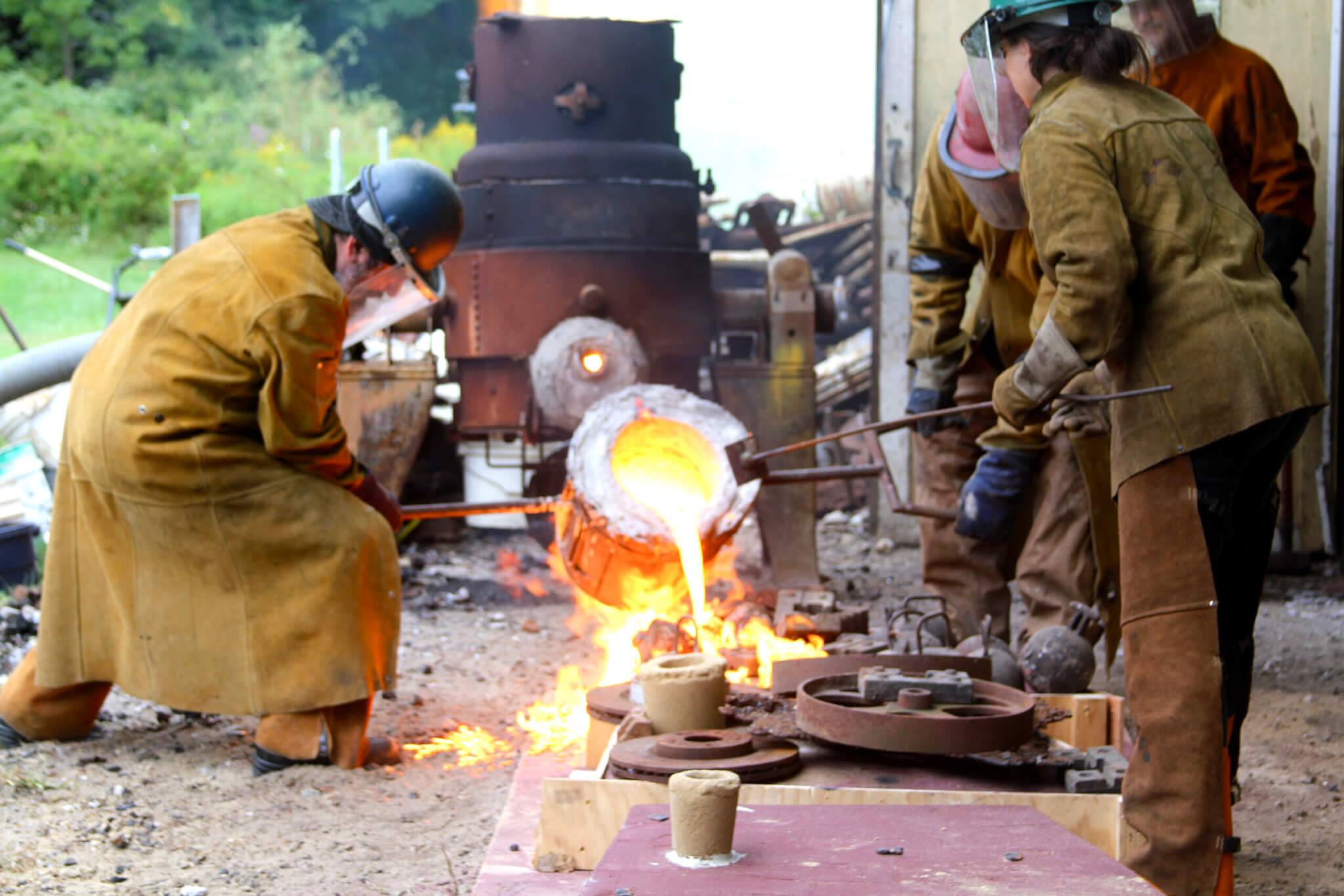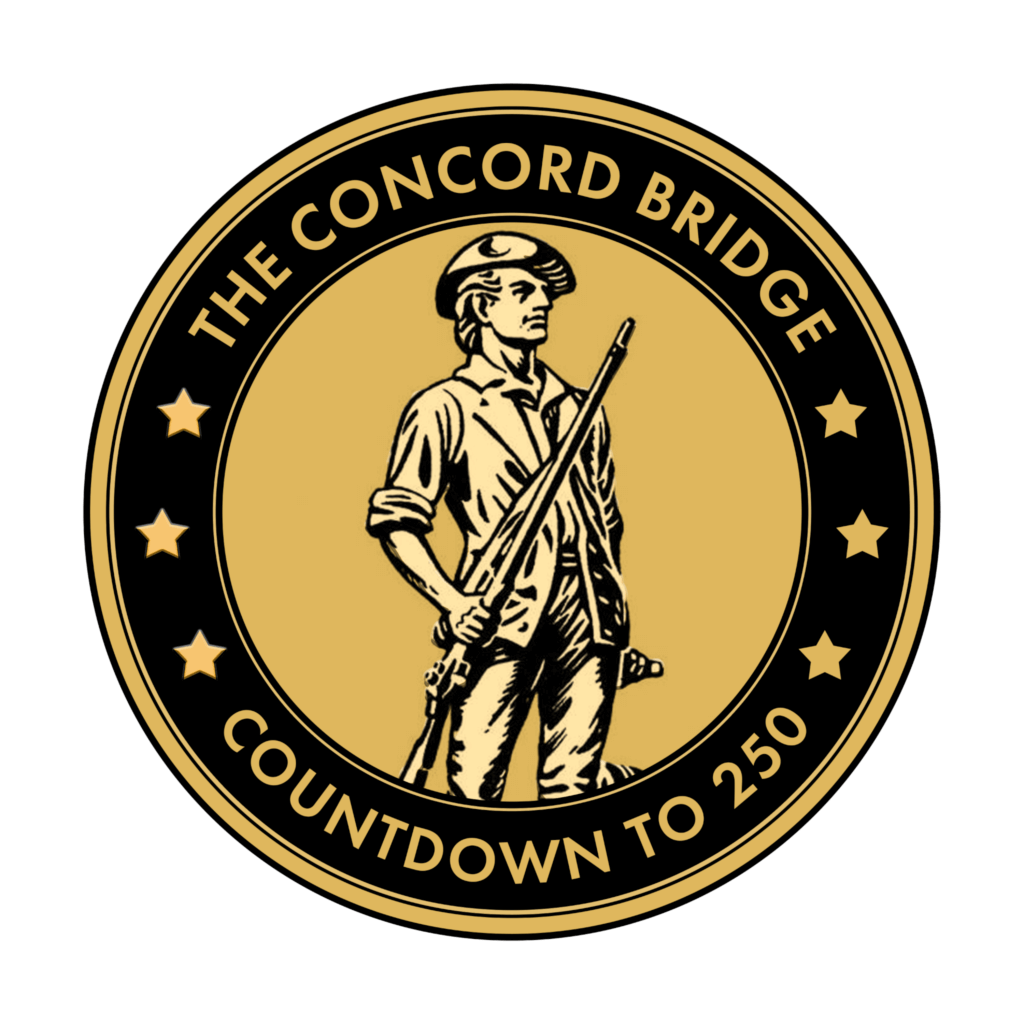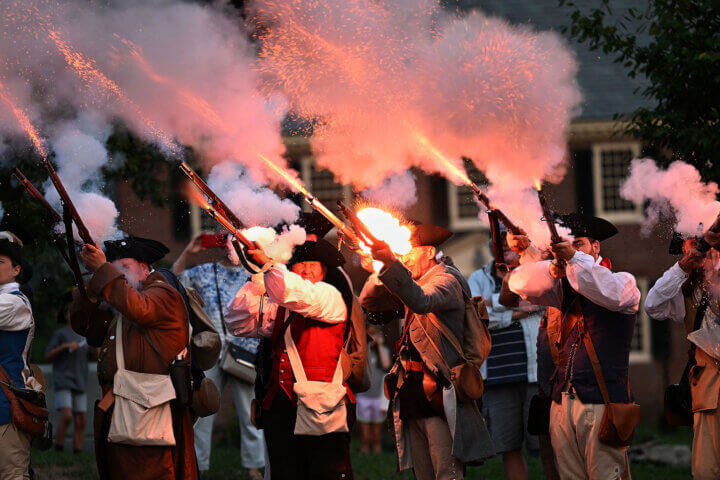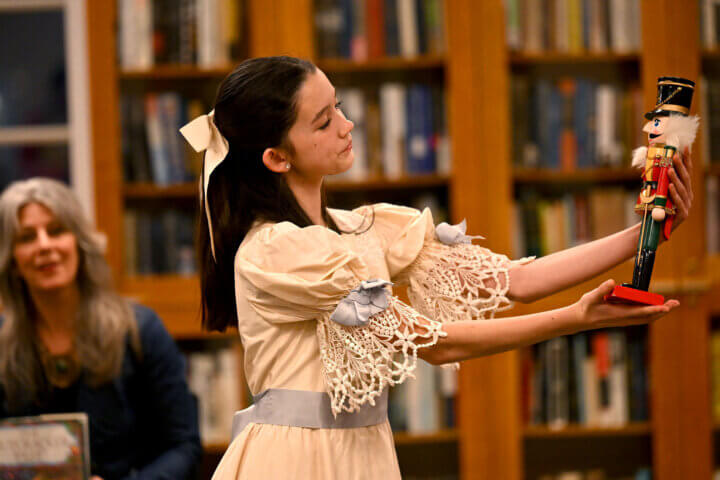By Laurie O’Neill — Laurie@concordbridge.org
Making art can be a solitary endeavor. However, sometimes it takes a team to help bring an artist’s idea to life.
“I credit much of my passion for the field to the community that surrounds it, particularly cast iron, which requires a team of people to execute,” says Liz Helfer, creator of a sculpture coming to Monument Square.
Titled “Freedom’s Silhouette,” Helfer’s creation is one of the early manifestations of Concord250, the town’s commemoration of its historic role in launching the American Revolution.
Helfer’s piece draws inspiration from the Revolution and the lives of 19th-century Concord residents and proponents of civil rights Henry David Thoreau and Ellen Garrison.
The project is part of the New England Foundation for the Arts’ statewide “Making It Public” program, which supports diverse, inclusive, and equitable public artmaking.
‘Very Concord and forward-looking’
“Freedom’s Silhouette” features two 6-foot benches with transparent acrylic silhouettes of the two historical figures, whose names Helfer sculpted into the bench ends. The transparency enables visitors to see their reflections alongside these historical figures and use them “as a lens through which to view the present,” Helfer says.
Her hope, she says, “is that the sculpture will inspire personal reflection on the small actions we can take every day to be more inclusive and to extrapolate to bigger action through our democratic processes.”
This past spring, the Town of Concord — in collaboration with NEFA, the Metropolitan Planning Council, and the Massachusetts Cultural Council — put out a call for projects that would reflect the “Fight for Freedom.”
Three semifinalists presented their proposals at a public forum, where attendees provided written feedback. A review committee unanimously chose Hefler’s design, says Mimi Graney, Concord’s economic vitality manager. The Select Board and Historic Districts Commission approved the selection.
“Liz’s expertise as a craftsperson was amply communicated in her presentation,” Graney says. “The design felt very Concord and forward-looking.”
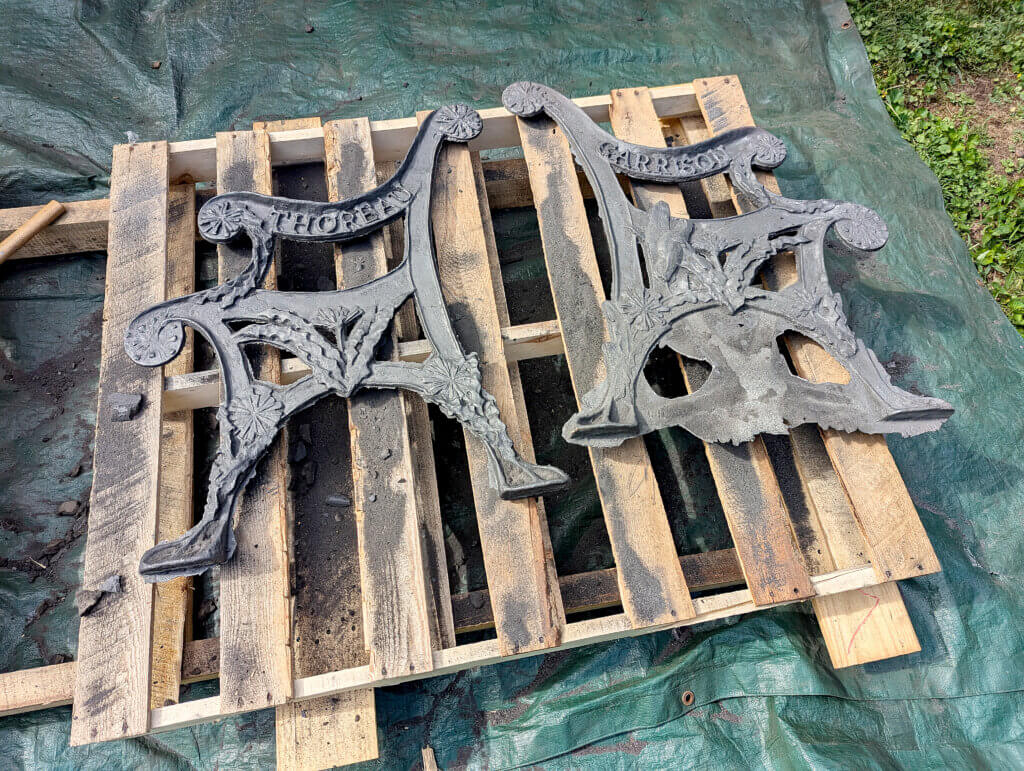
A passion for fire arts
Helfer, a New Hampshire native with a home studio in Waltham, chose fire arts — the fashioning of art forms that require heat, spark, or flame, such as glassmaking, metal casting, neon, and sculptural welding — as her focus at Alfred University, where she earned a B.F.A. in 2000. She took a foundry course in her junior year and “never looked back.”
The town is providing QR codes around the installation that link to more information from the project’s stakeholders, Helfer notes. Questions that she developed with input from the town are included on the signage.
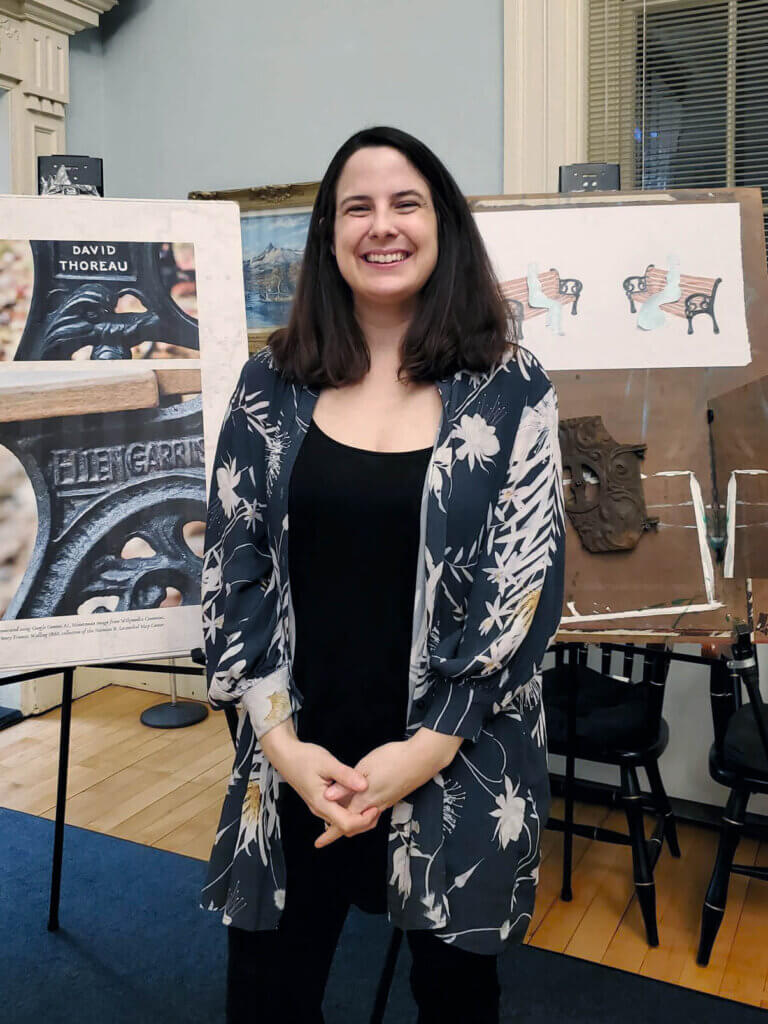
Helfer fell in love with sculpture early on while using modeling clay and paper. Her work has evolved into “a mixed-media practice that addresses our environmental peril,” she says.
Helfer “wouldn’t call metal the centerpiece” of “Freedom’s Silhouette.” Metal is “energy intensive and has serious environmental impacts, though cast iron may be less so than others due to the recycling of raw materials,” she says. She uses iron in the Concord piece “because it is historically accurate and symbolic.”
Rather than having it stand out as an artistic statement, she would like the installation to be “innocuous at first. … By choosing a passive public amenity, like a park bench, I hope passersby do a double take — that they will be drawn in by the benches and then think more deeply,” she says.
“And a small part of me hopes that folks simply sit and eat their lunch in the presence of these greats.”
The print version of this story included a misspelling of Helfer’s name. The Concord Bridge regrets the error.


